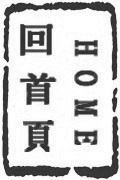
Algorithmic Music, aesthetics of
算法音乐(美学)/Suan4 Fa3 Yin1 Yue4 (Mei3 Xue2)
n/a
CHEARS: True
EARS: False
CMT: True
EARS2 Encyclopedia: False
CHEARS:
源自《计算机音乐教程》、罗玆、人民音乐出版社、2011。
The rupture of the Second World War led to an acceleration of the trend toward formalized and systematic methods of composition in the early 1950s. The tone-row method of composition promulgated 30 years earlier by Arnold Schoenberg had been generalized from pitch to other musical parameters (note durations, dynamic markings, etc.) by Anton Webern, Olivier Messiaen, and others.
In an attempt to break out of the extreme determinism of serial composition, European and American composers such as Karlheinz Stockhausen, Pierre Boulez, John Cage, and Earle Brown experimented with aleatoric methods of composition. By aleatoric is meant that certain details of the piece were left open to the interpreter (in the case of instrumental music) or else they were composed according to a random technique like throwing dice. Taking a more systematic path, Iannis Xenakis in the mid-1950s was composing music according to stochastic formulas, which formalize weightings across a range of probabilities.
Hiller's celebrated experiments with automated composition proved that the computer could model any formal procedure: from the canons of traditional harmony to the tenets of serial technique; both deterministic and stochastic methods could be coded. Programs sped up the time-consuming labor associated with systematic composition. Hence, software appeared as a logical extension of the aesthetic of formalized composition.
(Source: Curtis Roads, The Computer Music Tutorial. MIT Press. 1995)
EARS:
EARS 2:
参看其它/See Also
术语翻译/Terms Translator
术语校对/Terms Proofreader
术语顾问/Consultant to terminology
参考文献/Bibliography
讲座/Lecture
评论/Comments
发表评论(预先注册)/Add comment on this term(members ONLY)